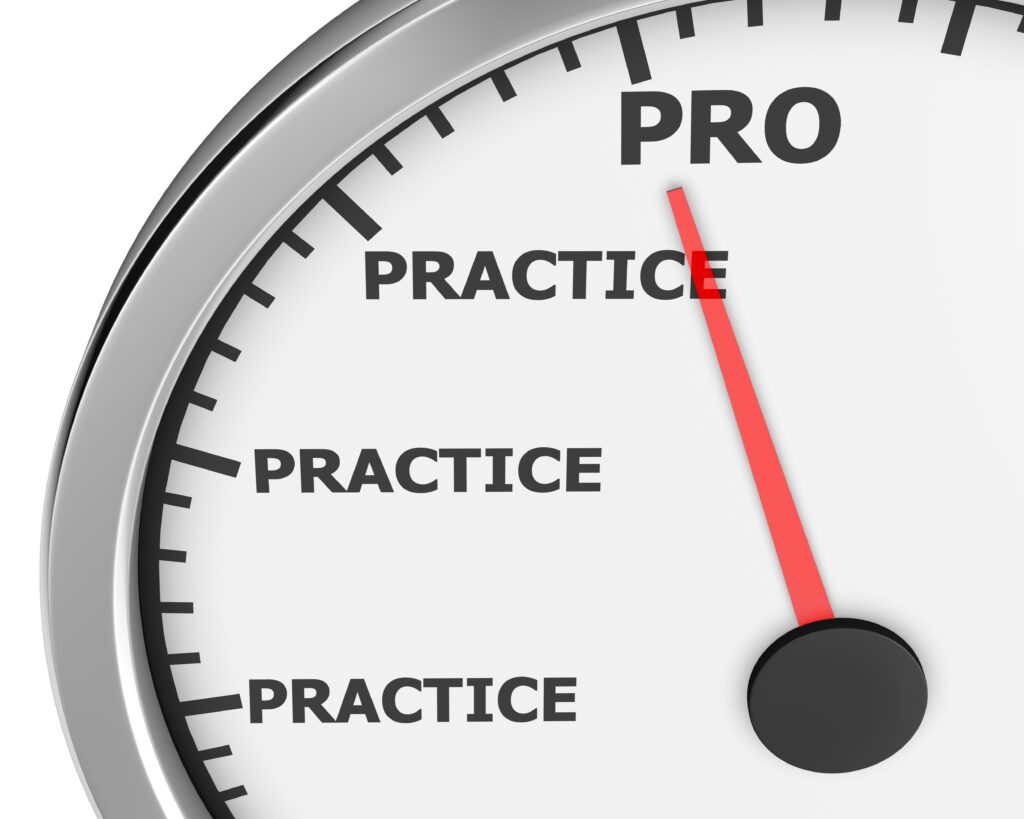In this Article...quick links
- Presentation pitfall 1. Not meeting the needs/expectations of the audience
- Presentation pitfall 2. Not being clear about the desired outcome
- Presentation pitfall 3: Trying to cover too much ground in the time available
- Presentation pitfall 4: Overcrowded or boring slides
- Presentation pitfall 5: Under preparation and failure to engage with the audience
- Quick tips: Dos and don’ts.

How many times have you sat through a presentation and found your mind wandering off after only a few minutes? Probably more often than you should. There are many reasons why a presentation, or a presenter, can fail to hit the mark. These include a lack of focus, under preparation, failure to answer the ‘So What’, overcrowded or boring slides and a monotone delivery – to name just a few! Although we find it easy to spot the problems when we are in the audience, all too often we make the same mistakes when we ‘take to the stage’. As a presenter, not engaging with the audience is the single most common reason so many presentations fail. Although there are many factors involved – and we’ll talk about the most common presentation pitfalls in this blog, along with tips on how to avoid them – the key to success is to follow the golden rule of presenting: It’s always about the audience, it’s never about you!
SecondNature has plenty of tips and guidance on how to improve the way you present, but if you don’t follow the golden rule then no amount of pizazz will make a difference. There are a whole host of basic dos and don’ts when it comes to presenting, and we’ll take you through a handy checklist of these later. But first, let’s look at the top five major presentation mistakes, and more importantly, the solutions for a successful presentation.
Presentation pitfall 1. Not meeting the needs/expectations of the audience
Each person in the audience is likely to have a clear expectation of what they are going to see from the presentation and hear from the presenter, and they won’t necessarily all be the same. Some people might simply want to learn more about the subject. Others may already have a fixed view and your goal may be to change their mind. Others may want reassurance about the direction of travel. If it’s a pitch situation, then the audience might be looking for compelling reasons why you are the best person or company to partner with. If you don’t fulfil these expectations – at least for the key decision makers – then you’re making a big presentation mistake. So how can you ensure that this doesn’t happen?
Solution: Do your research.
Before you even begin to think about putting pen to paper it’s essential that you do your research and ask yourself a few key questions. Why have you been asked to present? What is the audience expecting you to speak about? How does your presentation fit (if at all) within a wider picture? How much knowledge does the audience have on the subject? What are their different roles and therefore, particular information needs? What is their level of seniority and who are the key decision-makers? What is the problem that you need to solve for this audience? Will the audience have any concerns or questions that need to be addressed? Do they like things explained in lots of detail with backup data, or do they prefer information presented at a high/strategic level? Or both? And of course, how long do you have?
You should spend almost as much time researching/thinking about the audience as you do actually writing the presentation. This is because how you speak and approach your presentation will differ if you’re presenting to your senior executive team versus your colleagues.
That’s why by answering these questions, you’ll have a good understanding of the audience’s expectations, needs, drivers, and possible obstacles that should be addressed. This in turn will ensure your content is meaningful and motivating, and so engaging for your listeners.
Presentation pitfall 2. Not being clear about the desired outcome
If you are not 100% clear in your own mind about what you want to happen as a result of the presentation, then you can’t expect the audience to know either. Presenting is not an opportunity to just impart information – this can be done in other ways – e.g. sending a document by email. A presentation has to add a level of compelling knowledge, reasoning and emotion that can’t be communicated on paper. Otherwise, why bother?
Solution: Have a goal in mind.
At the start of your presentation clearly define what the Purpose is i.e., what outcome are you wanting to achieve as a result of the presentation. Do you want the audience to make a decision about something? Or do you want their feedback? Or perhaps their approval to do something? Maybe you simply want them to feel confident or reassured about a project? Or do you want them to leave your presentation with a greater awareness or insights about an upcoming strategy?
At the end of the presentation, circle back to your original Purpose and re-state the outcomes you want from the audience.
Stating your desired outcome and starting your presentation with a clear Purpose will give focus to your presentation and at the same time, keep your audience focussed too.
Presentation pitfall 3: Trying to cover too much ground in the time available
Instinctively, we all try to include as much information and rationale available to us to make a convincing point or argument. But it’s very irritating, and sometimes annoying, to watch a speaker rush through their material because they have done just this, and not managed their content, and time, appropriately. If you do this you will lose the audience quickly and they are unlikely to remember many/any of your key points, plus the expected outcome may not be clear.
Solution: Be disciplined. Keep focussed.
Remember, less is usually more. Review every element of content in your presentation and cut back on, or cut out, anything that isn’t vital. Ask yourself why you need this piece of information, and will your point still work without it? If it’s important as background detail, then think about sending it to the audience in advance of the presentation. Or, if it’s detail or data that’s important to the main point of the presentation, include it in a handout or appendix. Restricting what’s on the slides and keeping the information flow simple will create greater impact and help keep the audience’s attention.
Presentation pitfall 4: Overcrowded or boring slides
In the early days of PowerPoint many of us fell into the trap of putting everything we wanted to say on the slide (we used it as a document). Long sentences, multi-level bullet points and almost no visuals, other than a pie chart or bar graph, were the norm. Even though the technology to create amazing, impactful slides has improved immeasurably, far too many presenters still use PowerPoint as a document and read from their slides. This is an instant audience turn-off and, if you do it, will at once classify you as an amateur, regardless of the insightful points you are making.
Solution: Think of the slide as the visual representation of your words.
Remember, at a high level your slides can act as notes to prompt you (but of course you should have prepared sufficiently that you are able to recall all the key points easily). However, the main role of the slide is to reinforce, enhance, dramatise, add perspective, evoke emotion and bring to life what you are saying. Generate as much emotion as you can. Of course, you will have to include some words, particularly in summarising the key takeaway messages of your presentation, but do this over an amazing visual or photograph, or with an interesting or startling fact. Save the boring, but necessary stuff for the handout or appendix.
Presentation pitfall 5: Under preparation and failure to engage with the audience
Not rehearsing the presentation sufficiently is a common mistake, especially by those who regard themselves as ‘seasoned presenters.’ Having a compelling argument and great slides is only 50% of the job. The delivery also must be emotionally engaging to bring the presentation to life.
Solution: Practise, practise, practise.
Rehearse not just delivering your content but also how you can use your body language, movement and tone of voice to add impact, provide punctuation, and create drama. There are so many ways in which you can do this, here are a few:
Body language: Learning how to utilise your body language when presenting can make the difference between a flat, boring presenting style and one which is animated and engaging. It’s also a wonderful way to amplify one’s presence, even when presenting whilst sitting down.
Move with purpose: Move with purpose and confidence to a different position in the room or on the stage when you want to land a critical message. This will generate a natural pause and increase anticipation. You might find our advice on harnessing the Attention Triangle useful too.
Hand gestures: Use gestures (sparingly) to bring elements of your story to life, to emphasise key points and to add gravitas to your story.
Pause: The pause is a presenter’s best friend. Use it to verbally punctuate your narrative, to give the audience time to absorb a key piece of information or to put the spotlight back on you. Did you know there are 9 types of pauses you can use for dramatic effect?
Speak slowly: Speaking too quickly is one of the most common mistakes people make and a tell-tale sign of nerves. Practise speaking slowly, it will help to calm any nerves, add gravitas to your narrative and increase engagement.
Vary your tone of voice: There is nothing worse than listening to a monotone voice for minutes on end, even if the content itself is interesting. Vary your tone of voice to match your content. Dial it up to communicate emotion and excitement and lower it to make a more serious point.
Make eye contact: This is an important, non-verbal cue that can communicate an entire range of emotions and make the audience feel important. Practise this by looking in the mirror and conveying several types of emotion just by using your eyes.
Smile: This is another secret weapon that is under used, especially by business presenters. Smiling not only reduces nerves, but it’s also contagious too – it makes you feel good, and it makes the audience feel good.
When you rehearse your presentation also practise how and when you can introduce the tips above for maximum impact. If you rehearse enough times, it will become second nature! And you’ll be surprised that by knowing what the common presentation pitfalls are (and the solutions to prevent them), how significantly your presenting confidence and presence can be increased.
Quick tips: Dos and don’ts.
We’ve talked about the major presentation pitfalls that commonly affect presenters, but there are also some basics that can negatively impact on your performance and irritate your audience.
- Don’t be late. It’s rude and unprofessional. Allow plenty of time to get to the venue if it’s not in your own office or if you are presenting online, check your internet connection and join the call early. Being late also impacts on your nerves, so it affects you and your audience.
- Don’t run over. Time is money, and your audience will also find it disrespectful. Running over is effectively the same thing as being late, just at the other end of your presentation!
- Don’t use inappropriate humour. Introducing jokes is always risky, especially if you don’t know your audience well.
- Don’t read from your slides. No one wants to attend a read-along and the audience will always read ahead of you.
- Don’t use jargon. Unless you are presenting exclusively to a technical audience, keep it simple and use words that will resonate.
- Don’t make it about you. You are the least important person in the room. It’s all about the audience.
- Do rehearse with and test the technology. Especially if the venue or room is new to you. Try to scope it out well in advance but if you can’t then get there early, explore the room and make sure the equipment is working. Have a printout of your presentation so that you can carry on if the tech stops working.
- Do dress appropriately. Make sure you know the dress code of the audience. If in doubt, keep it simple and classic.
- Do start with a bang. Make sure the very first words, and slide, are surprising, impactful and engaging. We have written previously about ways to hook your audience at the start of a presentation, so take a look for some helpful tips.
- Do ensure you include a strong call to action. The audience needs to be clear about what you want to happen next.
- Do check on your audience regularly. Make sure they are still engaged. If they are fidgeting, doodling or looking at their phone then change the pace, your tone of voice and move to a different part of the room to re-engage.
- Do prepare yourself to answer questions. Answering questions from your audience shows you know what you are talking about and that you have engaged your audience. If you don’t know the answer, it’s okay to say so. You can promise to find out and get back to the person who asked the question.
- Do smile and DO enjoy the experience. The more you look and sound like you’re enjoying presenting, the more the audience will enjoy listening to you presenting. Win-Win!
Overcome presentation pitfalls and improve your people’s presentation success.
If you’re looking for help on how to improve your presentation skills, for yourself, or your team, our personalised training or coaching that is tailored to your business, is just what you’re looking for!
For nearly 20 years we have been the Business Presentation Skills Experts, training & coaching thousands of people in an A-Z of global blue-chip organisations through our range of in-person, online and blended programmes – check out what they say about our programmes.
To find out more, click on one of the buttons below:

Belinda is the Co-Founder and Managing Director of SecondNature International. With a determination to drive a paradigm shift in the delivery of presentation skills training both In-Person and Online, she is a strong advocate of a more personal and sustainable presentation skills training methodology.
Belinda believes that people don’t have to change who they are to be the presenter they want to be. So she developed a coaching approach that harnesses people’s unique personality to build their own authentic presentation style and personal brand.
She has helped to transform the presentation skills of people around the world in an A-Z of organisations including Amazon, BBC, Brother, BT, CocaCola, DHL, EE, ESRI, IpsosMORI, Heineken, MARS Inc., Moody’s, Moonpig, Nationwide, Pfizer, Publicis Groupe, Roche, Savills, Triumph and Walmart – to name just a few.




